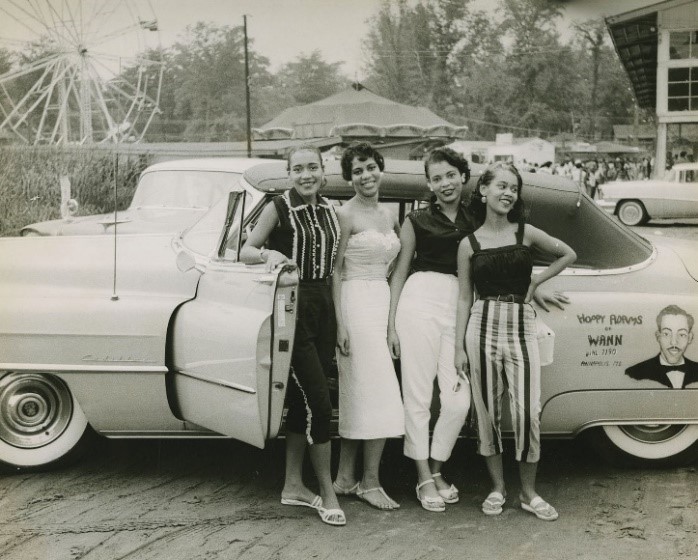Submitted by Washington State Historical Society
The Negro Motorist Green Book is an exhibition about African American actualization, innovation, and entrepreneurship. It is an uplifting story of communities and individuals taking to the open road and exploring with dignity and style. It’s a story of growth in Black-owned businesses, of the rising middle class, of families making cherished road trip memories, of migration, and of communities rising above during the era of Jim Crow and sundown towns. All of this was accomplished with the help and inspiration of Harlem postman Victor Hugo Green and his wife Alma Duke Green, whose annual guide became an indispensable resource for Black travelers in mid-century America.
The Washington State History Museum (WSHM) in Tacoma presents the multimedia exhibition “The Negro Motorist Green Book,” on view from March 19 through June 12, 2022. The exhibition was developed by the Smithsonian Institution Traveling Exhibition Service (SITES) in collaboration with Candacy Taylor, leading Green Book scholar and award-winning author of “Overground Railroad: The Green Book and the Roots of Black Travel in America.”
“This exhibition tells a story of resilience and innovation in the face of legalized discrimination,” said Myriam Springuel, director of SITES and Smithsonian Affiliations. “By examining the history of ‘The Green Book,’ we see an almost parallel country where people lived, thrived, created, and grew opportunities for themselves and their community. In this story of creative self-determination, we find the core of the American idea.”
Victor and Alma Green published their annual travel guide from 1936-1967, drawing to a close after the civil rights laws of the 1960s brought an end to legal segregation. The guide provided African American travelers with information about hotels, department stores, service stations, restaurants, entertainment venues, and other businesses that welcomed Black travelers. “The Negro Motorist Green Book” exhibition shares this history through historic film, artifacts from Green Book sites, postcards, and images. Firsthand accounts convey not only the apprehension felt by African American travelers during the era of Jim Crow laws and sundown towns but also the joys of living a full American existence at a time when taking to the open road was a coveted expression of freedom.
“Navigating a trip cross-country was not an easy journey for Black people at one time. It was extremely important to know where it was welcoming and safe to spend the night, stop for a meal, or gas up. The Green Book was an essential resource for every Black person’s glove compartment. Washington State was not exempt from the need to identify safe places. It was more than a simple guide; it offered driving tips and uplifted the entrepreneurial spirit of Black business. “The Negro Motorist Green Book” explores a history that was not very long ago and has relevant tones for what we know today as ‘Driving While Black,’” said Stephanie Johnson-Toliver, president of the Black Heritage Society of Washington State.
The exhibition will be accompanied by public programs organized by the Black Heritage Society and WSHS. Special ticketed events include a March 19 film screening with documentarian Yoruba Richen, who wrote and directed “The Green Book: Guide to Freedom” for the Smithsonian Channel™, and on May 19, an author talk with scholar Candacy Taylor, including members of the Seattle African American Writers Alliance. King County Metro Transit is offering their Black Lives Matter bus for a road trip from Seattle to the museum in Tacoma, and narration along the way with popular YouTubers Anthony and Marlie Love of Traveling While Black in Seattle; at the museum, passengers will hear a curator talk during a hosted lunch followed by a self-guided tour of the exhibition. Free programs include an online interactive storytime with the Northwest African American Museum, and an artist-led shoebox lunch craft and history talk at Wa Na Wari in Seattle. Details for these programs, plus reading and resource lists provided by SITES, Seattle Public Library, Tacoma Public Library, and a Seattle Green Book walking tour created by Black & Tan Hall, can be found here.
ExxonMobil’s predecessor Standard Oil Company of New Jersey played a significant role in the distribution of The Green Book across the United States through its network of Esso stations. Esso employed many African American engineers, scientists, and marketing executives, and welcomed African American motorists at its stations. As the only major Green Book retailer, Esso was a critical partner in elevating “The Green Book” to a national presence with a circulation of nearly 2 million by 1962. The final two editions, 1963-64 and 1966-67 were international.
Details about the exhibition, public programs, and additional learning opportunities are available here. “The Negro Motorist Green Book” was made possible through the generous support of Exxon Mobil Corporation. This exhibition has been locally supported by ArtsFund, Humanities Washington, and KNKX Public Radio. Public programming for the exhibition is supported by the Smithsonian National Museum of African American History and Culture.













































